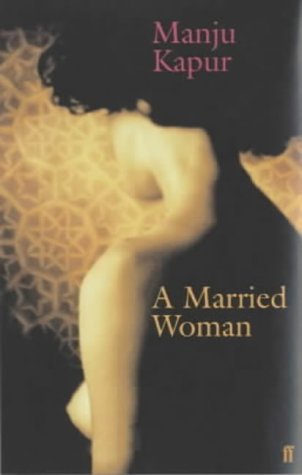

This feminist novel follows Astha from her teen years, through university and finally to her married life and motherhood, spanning from the 1970s to the 1990s. The central theme is Astha’s struggle for freedom and happiness, which is at first stifled by her controlling mother and later by her husband who expects Astha’s whole life to revolve around him and is resentful of any interests she has outside of their family and household.
Astha’s political awakening and personal rebellion is cleverly paralleled to the Babri Masjid mosque in India, a site of dispute between Muslim and Hindu communities. Astha’s awakening starts with studying the political situation of Babri Masjid almost by chance for a theatre workshop. Consequently she gets involved in leftist activism, which means both publicly fighting against Islamophobia and violent Hindu nationalism, and privately fighting for her right to be involved in activism against her husband’s wishes.
Through her activism Astha meets Pipee and the two women gradually fall in love at the peak of Astha’s rebellion. Pipee represents everything Astha’s life is missing: a genuine relationship based on trust and respect, freedom from norms and traditions, independence. Astha is torn between the life she could have with Pipee and between the familiarity of her marriage.
Astha’s personal story climaxes together with the escalation of the Babri Masjid conflict.
In the end, the violent nationalists win and Babri Masjid is demolished, just as it was in real life. Astha is still involved in activism even as she questions its futility but she lets Pipee slip from her fingers and the novel ends with Pipee moving abroad and Astha numbly returning to her marriage.
“Maybe the true victory of fundamentalism was the total despair of the secularist.” she thinks to herself in the final chapter.
On its own, this is a sound structure that parallels a broader national conflict with one woman’s personal conflict. However, I think the book somewhat falls prey to its own marketing. The blurb sells it as a story of a dissatisfied housewife who gets a female lover, probably because the publishing house decided that was the juiciest part of the story. The problem is that that’s not the centre of this novel, it’s the climax - the women don’t even meet until two thirds into the story. This is not a raunchy bisexual love story, it’s a bleak feminist meditation on the condition of a certain generation of Indian women. It doesn’t seem like that’s what anyone wants from it, though - in 2021, the book was adapted into a TV show which skips most of Astha’s life and focuses on her relationship with Pipee. (I haven’t seen the show yet and I’m not saying that’s inherently bad, I’m just commenting on the disconnect between the story that Kapur is telling and the story that people seem to want.)
Year of publication:
2002
Country of publication:
India
Page count:
310
Would I recommend this book?
Yes, but don't trust the blurb
There’s also a weird disconnect in the literary value of this book. Kapur has created a solid narrative structure, she’s great at social commentary and masterful at characterisation but her prose is weak, often veering into cliche (“the wall between them was by now quite high, and from time to time they both threw another brick on it.”) and nonsensical stylistic choices (eg. switching from third person narrator into short bursts of diary entries).
From a queer perspective, I’m glad that both Astha and Pipee are bisexual. This way the book manages to avoid the tired cliche of portraying bisexuals as inherently cheating, indecisive and attached to the comfort of heteronormativity. Instead, we get two bisexuals coming from different worlds and making different choices that represent them as individuals, not a whole sexuality.
Despite the weak prose and the often bleak story, I appreciate the complexity of this novel. I keep thinking about the (meta) commentary about leftist activism (Who does it truly serve? How much can we achieve with political art and “awareness raising”?) and about the USA as a utopian but ultimately false symbol of hope and progress. In the current landscape where LGBT media is compelled to be as simple and one note as possible, I appreciate a layered book that gives its reader a lot to analyse.

EDIT (27 January 2024)
I return to A Married Woman as the Babri Masjid mosque, a major symbol in the novel, makes news this week. The novel revolves around the 1992 demolishment of the mosque by a nationalist Hindu mob. This week the Hindu temple Ram Mandir was opened to the public on the site of the former Babri Masjid mosque in a highly controversial, politicised move that is said to have furtherly distanced India from its professed secularism.
In my original review last year, I stated that Kapur is “great at social commentary” but I found the story quite bleak. Now, more than 20 years after the book's publication, I’m forced to admit that Kapur’s story is bleak because of her social commentary, because of her foresight, and I have a new appreciation for the novel.
If you would like a brief overview of the historical and current situation around the Babri Masjid mosque and the temple that replaced it, I recommend this 10 minute report.
